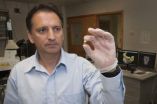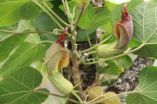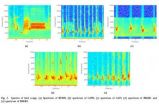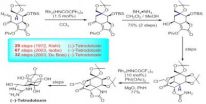(Press-News.org) The spread of misinformation through online social networks is becoming an increasingly worrying problem. Researchers in India have now modeled how such fictions and diffuse through those networks. They described details of their research and the taxonomy that could help those who run, regulate and use online social networks better understand how to slow or even prevent the spread of misinformation to the wider public.
Krishna Kumar and G. Geethakumari of the Department of Computer Science and Information Systems, at BITS-Pilani, Hyderabad Campus, in Andhra Pradesh, India, explain how we are increasingly reliant on information we obtain from online sources. However, our implicit faith in the validity of that information can be counterproductive and can make some people and organizations vulnerable to exploitation, perhaps by those spreading the misinformation and others. The team refers to this as a "semantic attack" and regards it as the "soft underbelly of the internet".
The team suggests that online social networks have added an additional layer of challenges for the detection of such semantic attacks above the conventional world-wide web and other internet services. As such, the rate of diffusion of misinformation can be very rapid as evidenced by recent events driven by panic spreading online regarding so-called "swine" flu in 2009 and a mass exodus from an Asian nation also driven by unnecessary online panic.
As with the transfer of information through any network, the nodes (the users in a social network) and how they are connected to each other is also critical to the diffusion of misinformation, the researchers report. For example, friendship links on Facebook and the follower/followee relationship on Twitter affect the impact and reach of given updates on those services from particular users.
Connections and connectivity have been well studied in recent years, but the concept of a semantic attack in which misinformation is deliberately seeded into a social network with the aim of affecting the behavior of the maximum number of people possible has only recently emerged as a troubling concept that requires detailed study. While there are firewalls, antivirus programs and other technological diagnostics and defenses to ward off attacks on servers, operating systems and software, defending against the impact of a semantic attack on human emotions and behavior is an entirely different matter.
INFORMATION:
Kumar, K.P.K. and Geethakumari, G. (2014) 'A taxonomy for modelling and analysis of diffusion of (mis)information in social networks', Int. J. Communication Networks and Distributed Systems, Vol. 13, No. 2, pp.119–143. END
Misinformation diffusing online
2014-07-31
ELSE PRESS RELEASES FROM THIS DATE:
Lead in teeth can tell a body's tale, UF study finds
2014-07-31
GAINESVILLE, Fla. – Your teeth can tell stories about you, and not just that you always forget to floss.
A study led by University of Florida geology researcher George D. Kamenov showed that trace amounts of lead in modern and historical human teeth can give clues about where they came from. The paper will be published in the August issue of Science of The Total Environment.
The discovery could help police solve cold cases, Kamenov said. For instance, if an unidentified decomposed body is found, testing the lead in the teeth could immediately help focus the investigation ...
Scientists discover biochemical mechanisms contributing to fibromuscular dysplasia
2014-07-31
An important step has been made to help better identify and treat those with fibromuscular dysplasia (FMD). FMD causes both an abnormal narrowing and enlarging of medium sized arteries in the body, which can restrict blood flow to the kidneys and other organs causing damage. In a new report appearing in August 2014 issue of The FASEB Journal, scientists provide evidence that that FMD may not be limited to the arteries as currently believed. In addition, they show a connection to abnormalities of bones and joints, as well as evidence that inflammation may be driving the ...
New paper describes how DNA avoids damage from UV light
2014-07-31
BOZEMAN, Mont. – In the same week that the U.S. surgeon general issued a 101-page report about the dangers of skin cancer, researchers at Montana State University published a paper breaking new ground on how DNA – the genetic code in every cell – responds when exposed to ultraviolet (UV) light.
The findings advance fundamental understanding of DNA damage by the UV rays found in sunlight. This damage can lead to skin cancer, aging and some degenerative eye diseases.
"Our paper advances foundational knowledge about how DNA responds to UV radiation. In our experiments, ...
Magnetic resonance imaging in patients with transient ischemic attack
2014-07-31
Transient ischemic attack (TIA) is a temporary event, which portends a higher risk of a disabling stroke following the TIA. However, the evaluation and management of TIA vary worldwide and is debated and controversial. Dr. Mohamed Al-Khaled from University of Lübeck in Germany considered With the development of brain imaging, particularly diffusion weighted imaging-magnetic resonance imaging (DWI-MRI), the diagnosis of TIA changed from time-based definition to a tissue-based one. DWI-MRI became a mandatory tool in the TIA workup. The DWI-MRI provides not only the evidence ...
Ligaments disruption: A new perspective in the prognosis of SCI
2014-07-31
Worldwide prevalence of Spinal Cord Injury (SCI) is ranging from 233 to 755 per million inhabitants, whereas reported incidence lies between 10.4 and 83 per million inhabitants per year. Thus, the socioeconomic impact of SCI associated with cervical trauma is high enough to be encountered within one of the most important worries in vast majority of developed countries.
The ability to predict recovery following SCI is of paramount importance to the physician's role in providing the best care and guidance to patients and families during the illness. Diagnosis of cervical ...
Brother of Hibiscus is found alive and well on Maui
2014-07-31
Most people are familiar with Hibiscus flowers- they are an iconic symbol of tropical resorts worldwide where they are commonly planted in the landscape. Some, like Hawaii's State Flower- Hibiscus brackenridgei- are endangered species.
Only a relatively few botanists and Hawaiian conservation workers, however, are aware of an equally beautiful and intriguing related group of plants known as Hibiscadelphus- literally "brother of Hibiscus".
Brother of Hibiscus species are in fact highly endangered. Until recently only one of the seven previously known species remained ...
Singing the same tune: Scientists develop novel ways of separating birdsong sources
2014-07-31
Researchers at the University of California, Los Angeles and the Chinese Academy of Sciences have pioneered a new study that could greatly improve current methods of localising birdsong data. Their findings, which ascertain the validity of using statistical algorithms to detect multiple-source signals in real time and in three-dimensional space, are of especial significance to modern warfare.
Recently published in the journal Unmanned Systems, the study demonstrates the validity of using approximate maximum likelihood (AML) algorithms to determine the direction of arrival ...
Gulf oil spill researcher: Bacteria ate some toxins, but worst remain
2014-07-31
TALLAHASSEE, Fla. — A Florida State University researcher found that bacteria in the Gulf of Mexico consumed many of the toxic components of the oil released during the Deepwater Horizon spill in the months after the spill, but not the most toxic contaminants.
In two new studies conducted in a deep sea plume, Assistant Professor Olivia Mason found a species of bacteria called Colwellia likely consumed gaseous hydrocarbons and perhaps benzene, toluene, ethylbenzene and xylene compounds that were released as part of the oil spill.
But, her research also showed that bacteria ...
Hope for the overweight
2014-07-31
White, brown and beige adipocytes, or fat cells, are inherently different. Each of these cell types has different functions and each plays its own role in metabolism. In the human body, white adipose tissue is by far the most prevalent. Its primary function is energy storage. On the other hand, brown adipocytes utilize available energy to generate heat but are only found in a few places in the adult human body. Beige adipocytes, which represent a special type of brown adipocytes, appear mixed with brown adipocytes in human brown adipose tissue or develop within the white ...
Privileged strategies for direct transformations of inert aliphatic carbon-hydrogen bonds
2014-07-31
Functional group transformations are central to organic synthesis. Traditionally, the functionalities used in such transformations are highly active organic groups such as halogens, ester groups and hydroxyl groups. Carbon–hydrogen bonds are ubiquitous structural motifs in organic compounds, but they are not considered to be functional groups because (1) in general, the bond dissociation energy of a C–H bond is high, and therefore, such bonds are thermodynamically hard to break; and (2) the selective activation of one C–H bond among many similar and different C–H bonds ...



